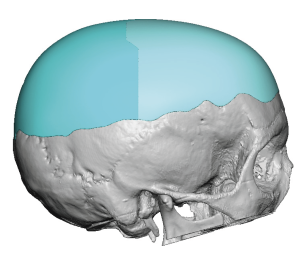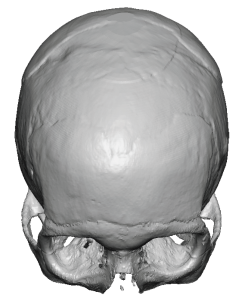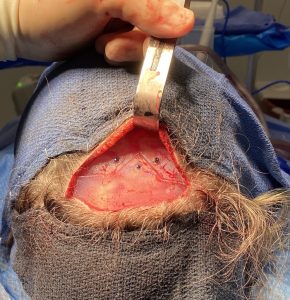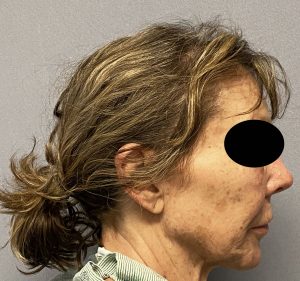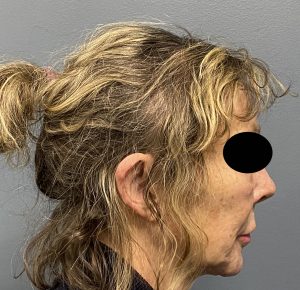Background: The size and shape of the head can be augmented for aesthetic purposes like any other part of the face or body. Historically and often still done today this is done by various types of bone cements. While bone cements are very biocompatible their working properties make them effective for only small skull augmentations. For more significant head size and shape changes custom skull implants have proven to be the optimal method for doing so.
Solid silicone custom implants have five very distinct advantages for aesthetic skull augmentations. These include a known biocompatible material, the ability to be made in any size and shape, an elastic deformation property that allows it to be placed with incisional lengths far less than the implant’s diameter, the ability to be placed on both bone and muscle fascia and easy removal or secondary modifications. Perhaps to not surprise the very features that make silicone implants widely sued throughout the face and body, for exactly the same reasons, apply to the skull.
Despite being the now superior method of aesthetic skull augmentations there are numerous questions and technical considerations are not known except by the very few surgeons who have extensive experience doing it. One question is in the patient with existing bone cement material does it have to be removed? How can custom skull implants be placed without having to do a full coronal scalp incision?
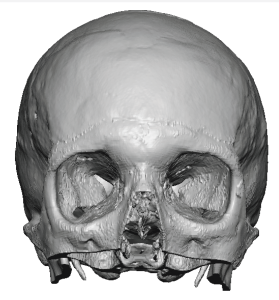
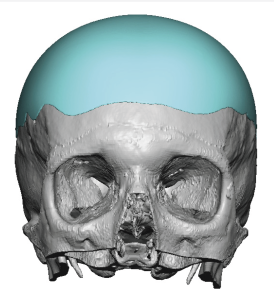
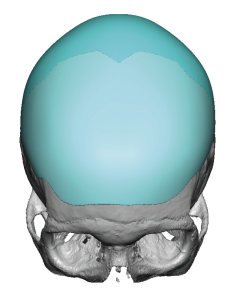
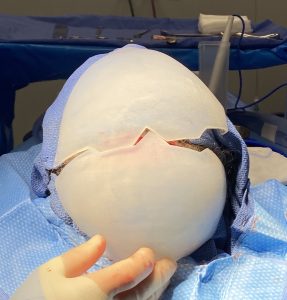
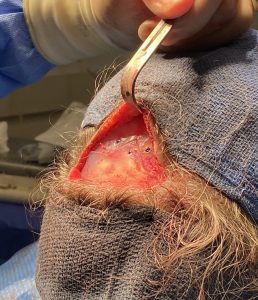

The limitations of large skull augmentations are in how much the scalp can stretch to accommodate it. There are numerous factors that influence that limitation but implant volume is one of them along with scalp thickness. As a general rule keep the total implant volume under 150ccs. The thinner the scalp is (as determined by skin pigment, hair color, body size and ethnicity) the less implant volume can be placed without a first stage scalp expansion.
Key Points:
1) Bone cements remain an ineffective technique for larger surface area skull augmentations.
2) Large surface area skull augmentation often require a split implant technique to keep the scalp incisional length limited.
3) Custom skull implants can be placed over existing bone cements cranioplasty materials
Dr. Barry Eppley
World-Renowned Plastic Surgeon




